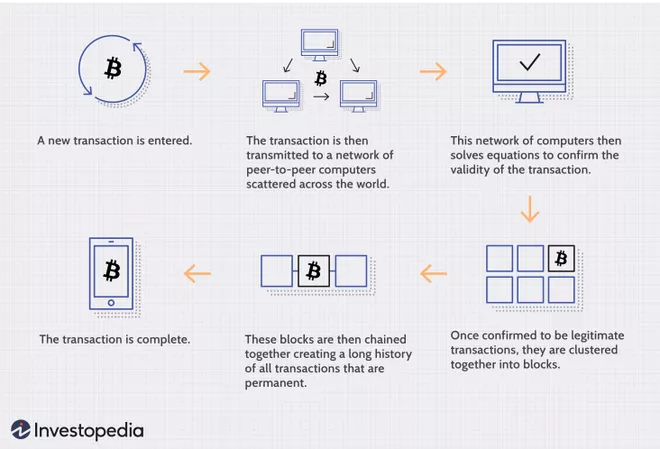With the major adoption of crypto by many countries around the world and more retailers accepting it as a form of payment, it is becoming important to understand how crypto works.
What are cryptocurrencies?
Cryptocurrencies can be thought of as stocks, meaning that their value constantly changes due to changes in supply and demand.
There are many different types of cryptocurrencies, two of the most popular being Bitcoin and Ethereum.
Bitcoin was the first cryptocurrency ever created. It was created by Satoshi Nakamoto, the pseudonym for the person/people that developed Bitcoin. The value of 1 Bitcoin at the time of writing this blog is around $43000. The expensiveness occurs because of the hard limit that Satoshi placed on the number of Bitcoins that can be in circulation, precisely 21 million.
Ethereum was launched after Bitcoin in an attempt to use the network to run applications. Bitcoin can only be used as digital money, while Ethereum can be used to trade and store other items, such as smart contracts and NFTs.

Whenever crypto is bought or sold, the action is noted down in what is called the “blockchain mechanism”. Blockchain is extremely secure. After a transaction is performed, computers around the world solve equations to confirm that the payment is correct. Billions of transactions can be occurring at any given time, and these transactions are clustered into blocks. The blocks are chained to one another to create a history of all the transactions that have taken place.
When someone turns on mining on their computer, their computer starts solving mathematical equations to confirm transactions. The miner obtains a small portion of the transaction amount, causing mining to become profitable.
The history of transactions are recorded in several computers instead of only one. If someone with malicious intent attempted to modify the history on one computer, it would be unsuccessful because other computers around the world have the correct data saved. Only one copy of the transactions have been changed, causing it to stand out and be rejected.
Theoretically, if a hacker is able to modify more than 50% of copies on different computers, they would be able to hack the chain. However, the money and time spent doing this would not be worth it.
Bitcoin transactions are irreversible, which is an advantage for scammers. Once money is transferred from one account to another, the money cannot be returned to the original sender unless the receiver of the money sends it back.
Wait, so what is an NFT?

NFT is the abbreviation of non-fungible token. An NFT can be anything digital—a picture, a song, video game items, a meme, and even a Twitter tweet!
Think of it as putting a price on anything digital. Although NFT images and songs can usually be downloaded without paying, the value usually isn’t in the item but instead in the rights to use that item. A real-world example is the Mona Lisa. If someone were to own the Mona Lisa, it would have cost them almost a billion dollars. Many people have taken photos of the Mona Lisa and there are counterfeits that are basically identical, but the value lies in having the original one. Similarly, saving a digital image to your desktop has no value, the license to use it (in your profile picture, on a website, etc.) is what really matters.
Some important NFT artists are Beeple, Pak, and FEWoCIOUS.
NFT prices have gone up to $69.3 million. Most of the time, people buy them at such high prices because they believe that they can resell them at a higher price and turn a profit
Crypto Wallets

Crypto wallets are basically digits wallets that store cryptocurrencies.
There are 3 different types of crypto wallets: paper wallets, hardware wallets, and online wallets.
When a key is written on a piece of paper or some other material and stored somewhere, it is called a paper wallet.
Hardware wallets are keys that are stored inside a piece of hardware, such as a USB drive. When the USB drive is connected to a computer, the crypto can be used.
Online wallets are stored in a piece of software online. It is the most convenient because it can be accessed from anywhere at anytime.
Paper and hardware wallets are the most secure, but are not very practical in the long run as materials and items can get lost, stolen, or damaged. Online wallets are the easiest to manage and handle.
Some of the most popular crypto wallets that crypto enthusiasts use are Coinbase, Gemini, Uphold, and Ledger (a hardware wallet).
